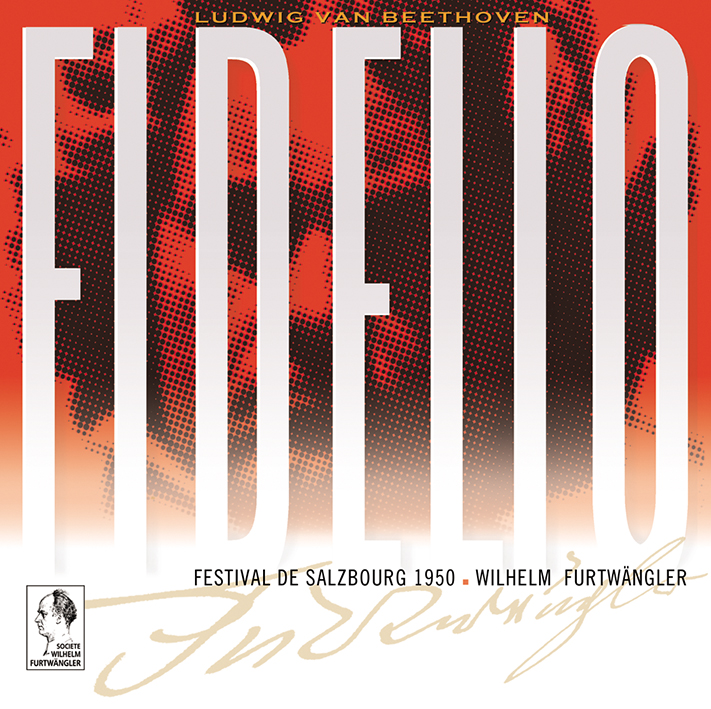News
The SWF continues to acquire concert programmes, thus enriching its collection. Within a few days that for the Saint Matthew Passion given in Vienna in November 1938 will be made available online.
Among recently acquired programmes is a whole series with the Vienna Philharmonic from 1948 to 1952. The interesting point: these leaflets seem to have belonged to one and the same music-lover, an assiduous listener who sometimes annotated this or that page in pencil, inserting press cuttings of reviews — and he read several newspapers! — as well as the concert ticket.
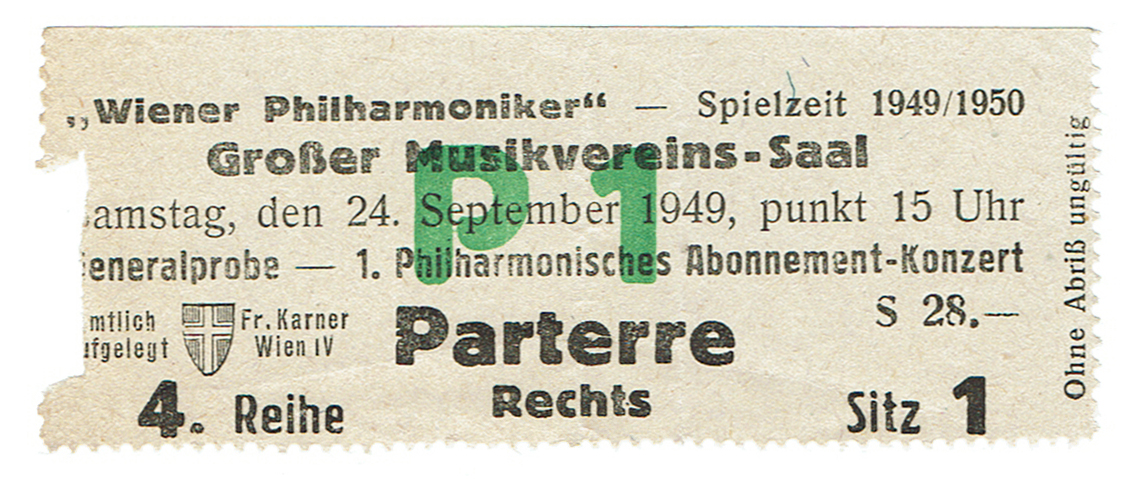
The annotations, written in fraktur, a cursive German script, are difficult to decipher, having been probably quickly scribbled during the concert. Palaeontologists take note!
We are currently working on the first purely ‘digital’ product in our catalogue: Beethoven’s Ninth Symphony, in the 1942 Berlin recording.
We chose this ‘indispensable’ recording for its emblematic character — it was one of our first LPs and one of our first CDs — and also because the CD stock is now exhausted. To repress it would be needlessly expensive. On the other hand, and for those who do not like downloading, a system of engraving on demand is being studied.
Even so, just to transform a CD into a downloadable audio file presents little interest, and it is something that all classical labels do. The SWF, by contrast, is proving itself particularly innovative: we are making available to our members a digital pack that is much more comprehensive, worthy of our editorial tradition and going beyond the norms of the platforms.

Also, in addition to the CD quality audio file (flac format) — and its mp3 compression for those who prefer it, we include in this downloadable pack, as a pdf file and in the now well-known format of our publications:
– an introductory note,
– an exhaustive presentation (digital booklet) with the very fine and ever relevant text of Harry Halbreich, the biographies of the artistes, a list of the ‘Philharmoniker’ of the time, and, not least, an iconography,
– the digital booklet in French,
– a colour facsimile of the concert programme of 22 March 1942,
– a list of the Ninths conducted by Furtwängler..
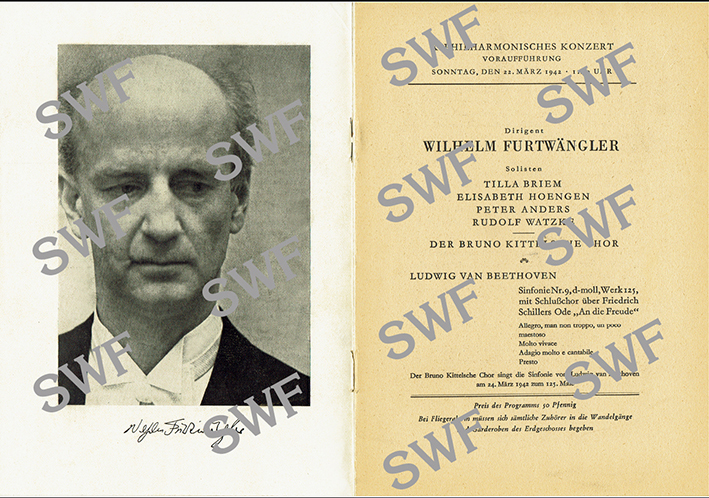
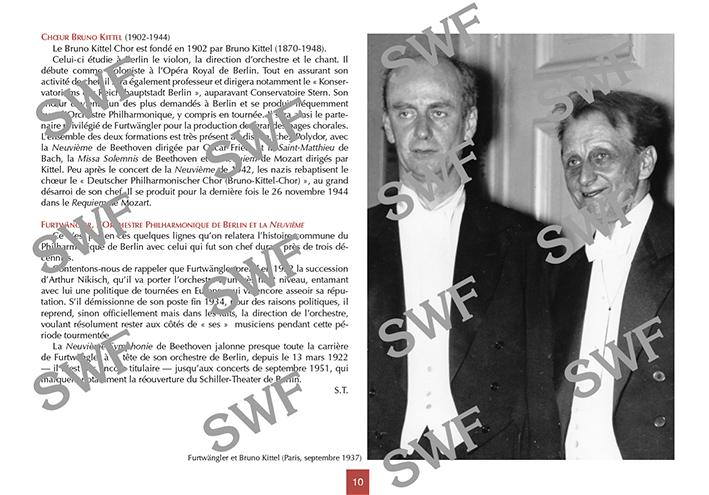
This product will be on sale to our members at the price of 8€. We plan to release it early May 2018, and are currently working on the final preparations.
NB: The Japanese Brahms CD, announced in the latest newsletter, is now available in our online shop.
The Wilhelm Furtwängler Centre of Japan has released a Brahms CD with Furtwängler conducting the Vienna Philharmonic, a transfer from commercial 78 records (EMI): the First Symphony (1947) and the Haydn Variations (1949). Unlike previous releases of the same origin that presented the works in detached sections (the sides of the 78 records one at a time) and then in ‘real size’, here we have the works in their continuity. Whereas the Variations have never been out of the catalogues, the same has not been true for the Symphony, this recording having been eclipsed over the years by the Hamburg, Amsterdam, even Berlin versions. And yet…

We decided to order a certain number of copies. The product will thus soon be available in our online shop — we shall let you know!
In former times a festival was held regularly, though not annually, in Görlitz, the second city of Silesia after Breslau (now Wroclaw in Poland). The Berlin Philharmonic took part from 1910 onwards, but these “Silesian Music Festivals” were distinguished by six concerts during the three “Furtwängler years” of 1925, 1928 and 1931.
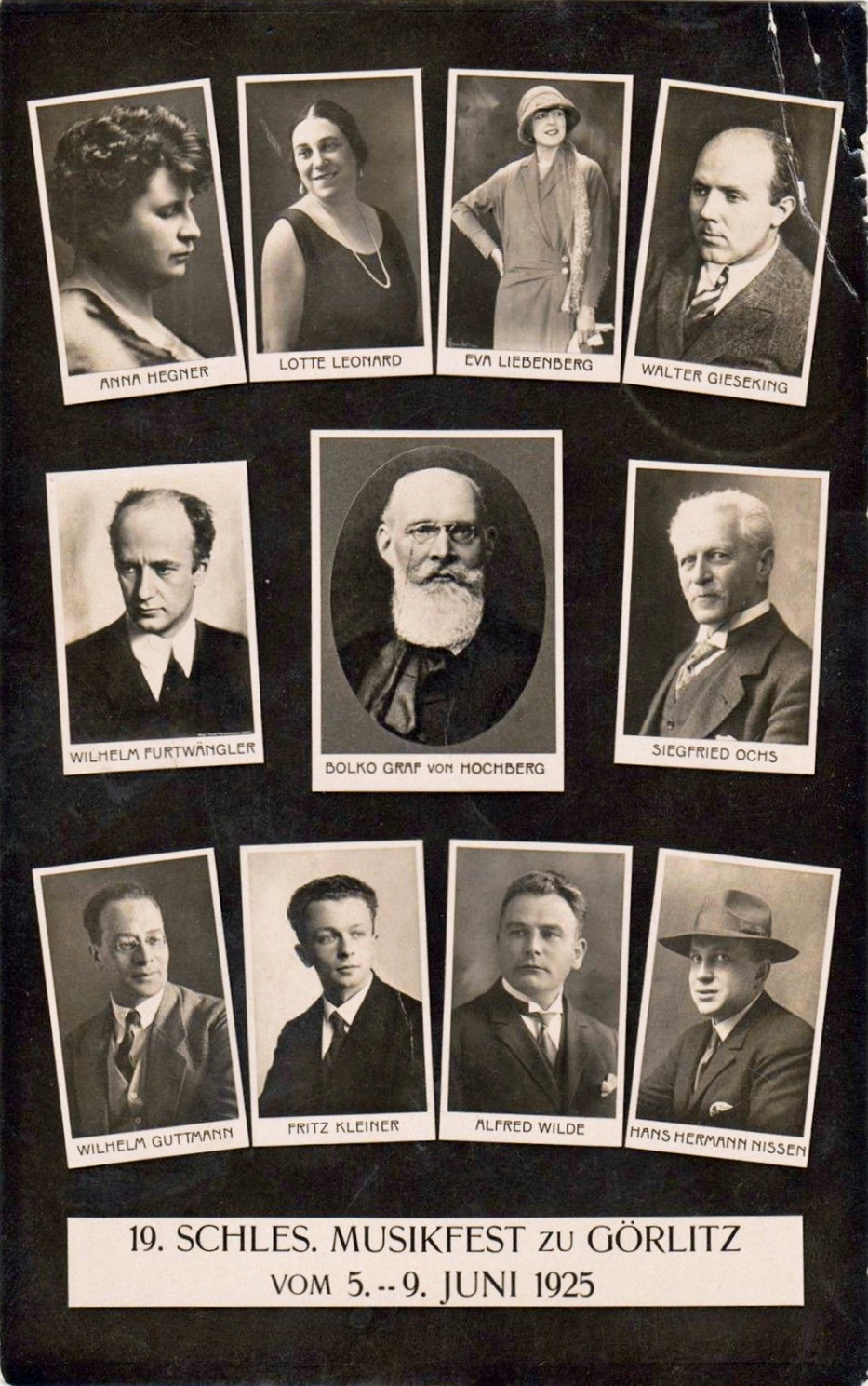
Stéphane Topakian invites you to revisit these occasions at a conference, in both sound (excerpts from each of the 23 works played) and vision (numerous illustrations, many from the period), with technical assistance from Patrick Montaigu. It will take place on 28 March — see details on our Conferences page.
A deficiency in the Furtwängler discography is that we don’t have a single composition of Reger from his baton. It’s true that he did not conduct a note of Reger after his return to the podium in 1947. And even being optimistic, only the Variations on a theme of J A Hiller, which featured in the programme of a concert in Berlin in January 1943 (which also included Franck's Symphonic Variations with the young Geza Anda), stand even a slight chance of returning from the void.
And yet, without claiming to be a Reger enthusiast, Furtwängler still supported him, programming his music some 70 times! To shed more light on this, the SWF has published a brief study by Stéphane Topakian, listing his performances of Reger’s works and suggesting an approach to the relationship between the two musicians.
This study is only available to members.
Which of us hasn’t dreamed of attending this concert, on 22 February 1951: the Emperor Concerto with Fischer and Furtwängler. It took place at the Royal Albert Hall, just after the recording sessions which immortalised a legendary performance and at the same time provided for thorough rehearsals.
The orchestra was the Philharmonia, founded only a few years earlier by Walter Legge, the artistic director at HMV, to satisfy his hunger for records at a time when the catalogues, restricted during the war years, were in urgent need of development.
ut it was also a normal orchestra with a regular season of concerts. To accompany the facsimile Philippe Jacquard has outlined the relationship between the great conductor and this superlative ensemble.
As always, the facsimile is also available from the concert and Get the programme! page.
The fact that we have so many recordings of Furtwängler today is due not only to the record industry, but as much or more to radio recordings. We certainly don’t have everything that was broadcast – not all transmissions were recorded, and not all recordings that were made have survived.
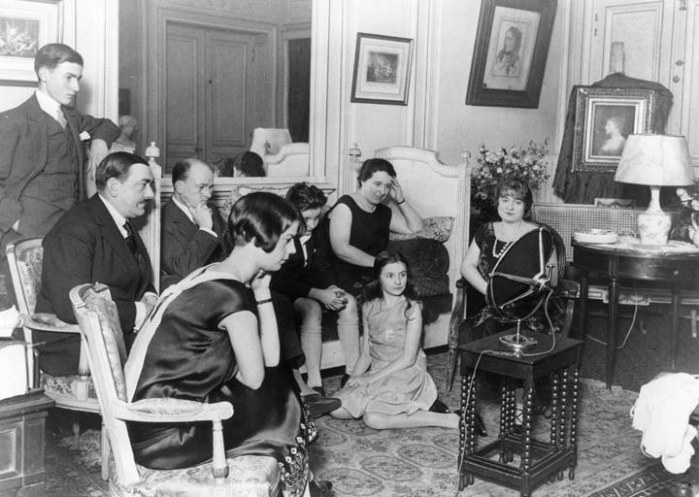
But Henning Smidth has undertaken the substantial task of cataloguing broadcasts of performances from 1929 to 1954. The list may not be complete, but it is very well documented with an abundance of detail. In it we find recordings that have become milestones, but also reasons for regret: why did this or that broadcast not survive? There is certainly enough here to fuel dreams of possible future discoveries.
For some years Henning Smidth has periodically updated his list; we present here the 2018 update.
Our new double CD (SWF 181-2) will be available on Tuesday, February 20th.
An interview with Sami Habra a few weeks ago provided a foretaste of our issue of the Salzburg Fidelio of 1950 on two CDs. This Fidelio has everything going for it - very committed conducting, improved sound thanks to our in-house team of Sami Habra and Charles Eddi, and a superlative cast.
And this is surely the very top of the range - the mighty Flagstad at her tragic peak, a deeply moving Patzak, Schöffler evoking an unusually dark Pizzaro, and the other roles entrusted to outstanding talents: Schwarzkopf as Marzelline, Dermota as Jaquino, Greindl as Rocco.
This 2CD album is offered at the attractive price of 18 €.
And out of consideration for anyone who might like to compare the 1950 vintage with that of 1948 (SWF992-3, with Erna Schlüter as Leonore), the SWF is also offering a package (SWF 189) bringing together the two albums (hence four CDs in all) at the unbeatable price of 24 €.
So, go to our on-line shop!
In the course of preparing a short study on Furtwängler and Max Reger, an anecdote has emerged featuring the conductor, the violinist Adolf Busch and the then very young pianist Rudolf Serkin.

There is nothing here of great importance, except that a careful examination of the facts leads to the conclusion — indeed an immutable principle — that one should always exercise vigilance when reading biographies. This little article Au cœur d'un continuo ('At the heart of a continuo') is reserved for members.

The expression “surfing the web” is an image, but a very apt one. We have learned to navigate not just a wave but a real flood of information. At the same time the development of the internet has prompted many institutions to open their doors, indeed their cupboards and tape boxes, making a huge volume of material which they have progressively digitised available, if not to everyone then at least to a select few.
This has led us to make contact with these institutions, a step which until the last few years ago we would not have attempted. And we were wrong to hesitate, because in most cases the custodians of these treasures are delighted to be able to share their knowledge, provided that they are treated with respect and that we in turn raise awareness of their activities. In this spirit the SWF has established contacts with the Vienna Philharmonic, the Accademia Santa Cecilia in Rome, the Stockholm Konserthuset, the Philharmonia in London (with less success), and also the Brahms Institute in Lübeck, the Reger Institute in Karlsruhe, the societies dedicated to Frida Leider, Erna Schlüter and Eduard Erdmann, and most recently the Hindemith Institute in Frankfurt, to whom we are indebted for a valuable document, the Schott press kit which accompanied the concerts of 11 and 12 March 1934...
It hardly matters whether these contacts bring us minor details or great historical insights; such exchanges are essential, making us aware of the activities of others with mutually enriching effects.
In a previous statement, we were happy to announce the good results obtained during the first six months of our new website. However, the site was sorely missing an English version. It was no omission, but rather something that required more time than anticipated.
We are happy to announce that this English version will be made available during January, 2018.

The main functions of the website will be translated in a first stage, complete with headers and the latest news. We intend to complete it in due time with chosen studies, on a case by case basis.
However, we do not plan to translate the list of the concerts and the discography, which refer to quasi international standards—places, works, orchestras, etc.
Cette actualité s’adresse avant tout à nos amis anglophones. Nous annonçons pour courant janvier la version anglaise du site.



